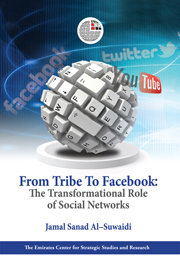Book contents
- Frontmatter
- Contents
- Acknowledgments
- Introduction
- Keywords
- Scope of the Study
- Previous Studies
- Social Networks: Concept and Role
- Statistical Indicators of Main Social Networks
- The Social Networking Age
- Data-entry Potential of Social Networks
- Impact of Social Networks
- Prospects for the Relationship between Traditional Media and Social Networks
- Legal Problems Associated with the Use of Social Networks
- Social Networks: Future Prospects
- Conclusion: Various Future Prospects
- Notes
- Bibliography
- Index
Social Networks: Concept and Role
Published online by Cambridge University Press: 05 September 2014
- Frontmatter
- Contents
- Acknowledgments
- Introduction
- Keywords
- Scope of the Study
- Previous Studies
- Social Networks: Concept and Role
- Statistical Indicators of Main Social Networks
- The Social Networking Age
- Data-entry Potential of Social Networks
- Impact of Social Networks
- Prospects for the Relationship between Traditional Media and Social Networks
- Legal Problems Associated with the Use of Social Networks
- Social Networks: Future Prospects
- Conclusion: Various Future Prospects
- Notes
- Bibliography
- Index
Summary
A social network is defined as, “A dedicated website or other application which enables users to communicate with each other by posting information, comments, messages, images, etc.” Therefore, the concept of social networking used in this study is defined by software and does not include hardware descriptions such as desktop computers, laptops, tablet PCs, smart phones and other communication technologies. However, it has not escaped notice that fast-developing innovations in the field of hardware are one of the most important factors governing the spread of social networks.
Social networking sites are now accessed by 71% of those working in the communications industry. Each social networking site is unique in terms of the way in which content is transferred. However, they all share the ability to allow communication between people without spatial limits, time constraints or restrictions on freedom, and offer the opportunity to transfer the content of any visual, voice or written message. Most social networking sites can be accessed from anywhere in the world thanks to a universally available Internet network, whether wired or wireless, and the availability of compatible hardware such as smart phones, tablet computers, and other technological devices. In his State of the Union address on January 25th, 2011, US President Barack Obama highlighted the influential ability of social networks when he stated, “We are the nation … of Google and Facebook.”
- Type
- Chapter
- Information
- From Tribe to FacebookThe Transformational Role of Social Media, pp. 20 - 28Publisher: Emirates Center for Strategic Studies and ResearchPrint publication year: 2013



